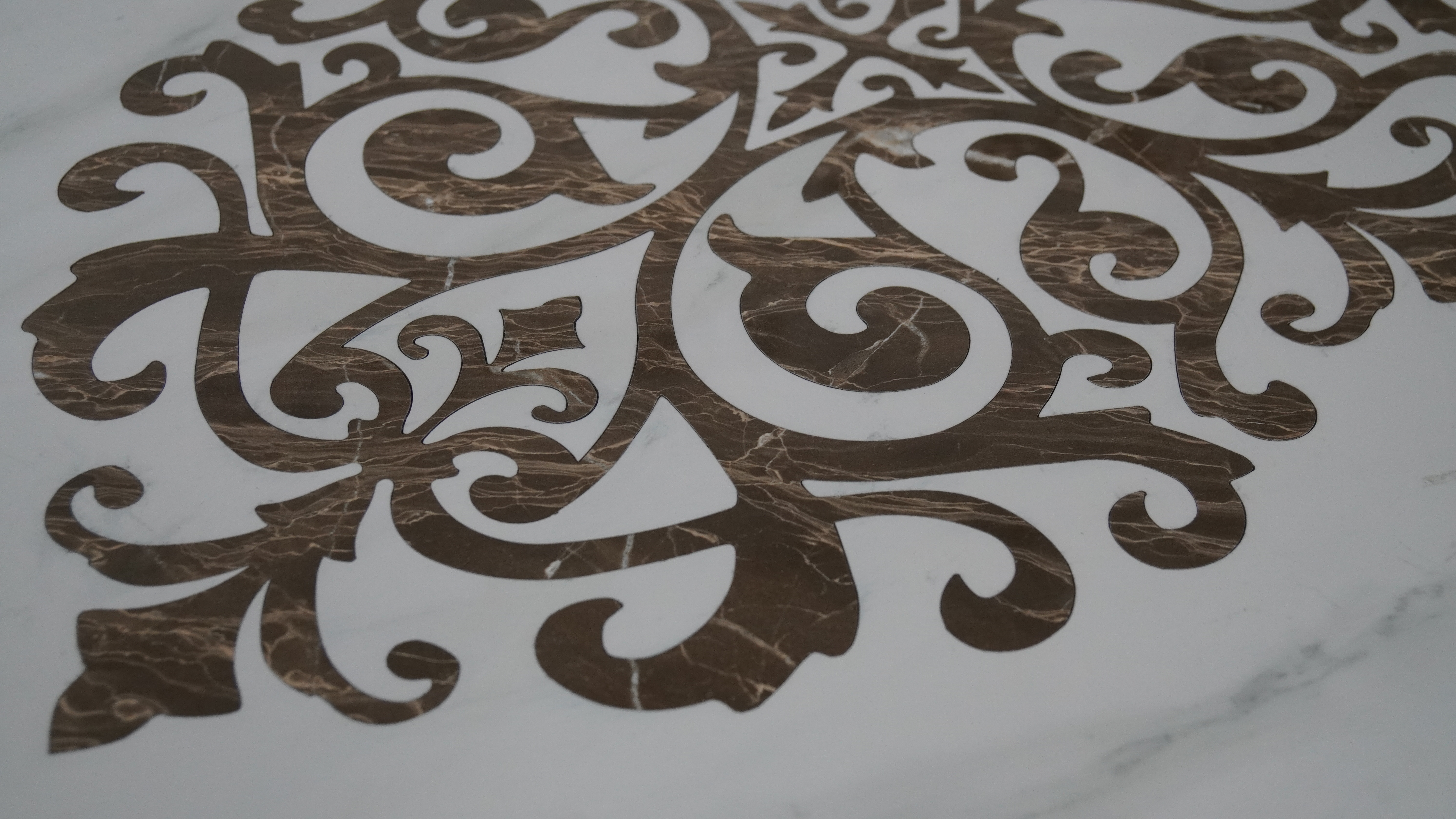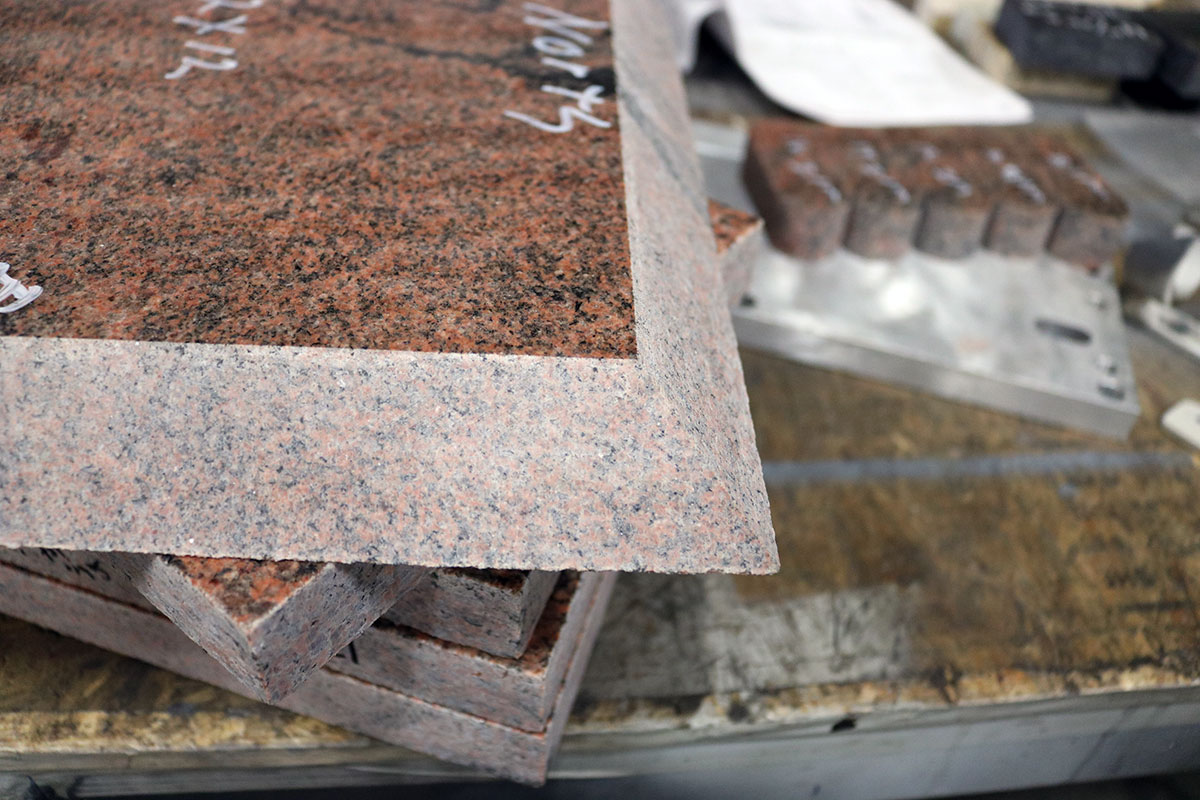- Home
- Customization Cases
- HEAD Products
- HOT
- Service&Support
- Success Cases
- Applications
- About Us
- Contact Us
- All
- Product Name
- Product Keyword
- Product Model
- Product Summary
- Product Description
- Multi Field Search
Views: 0 Author: Site Editor Publish Time: 2025-09-28 Origin: Site

Tile producers today are asked to deliver perfect geometry, clean edges, and fast lead times across porcelain, ceramic, and sintered surfaces—often with custom mosaics and curved features that strain conventional tooling. Wheel scoring and diamond saws are cost-effective for straight cuts but can introduce chipping, micro-cracks, dimensional drift, dust, and rework, especially on dense porcelain and glazed finishes. This guide explains why leading tile factories are adopting HEAD Waterjet—and how to capture measurable gains in yield, flexibility, and cost per square meter.
Edge damage & micro-cracks: Mechanical cutting imparts stress at the score line; small chips propagate during installation or service.
Limited geometry: Tight radii, small holes, and complex inlays demand multiple passes or manual finishing.
Dust & heat: Dry processes create airborne dust and heat that affect glazes and working conditions.
Inconsistent accuracy: Manual variability drives rejection rates and on-site fit issues.
High scrap on premium SKUs: Breakage on rectified, polished, or large-format porcelain erodes margins.
Waterjet removes material with high-pressure water (optionally with abrasive), producing a cold cut—no heat-affected zone, no burning of glazes, no micro-cracks. Built for stone and ceramics, HEAD machines embed motion control, fixturing, and CAM workflows proven in tile plants.
±0.1 mm dimensional accuracy with chip-free edges that minimize polishing.
15–20% yield improvement from thin kerf and optimized nesting.
CAD/CAM design freedom: curves, logos, medallions, vent slots, faucet/hinge holes—no special tooling.
Cleaner, safer cells: reduced dust, lower noise, enclosed cutting area.
Multi-material capability: porcelain, ceramic, marble, quartz, glass—one platform for mixed orders.
A Southern Europe tile plant producing large-format porcelain upgraded a manual saw/score line with a HEAD waterjet. Within 9 months they reported:
Scrap down ~20%: fewer edge defects on rectified and polished tiles.
Cycle time predictability: automated programs stabilized takt and delivery commitments.
New revenue streams: complex mosaics and curved skirting for hotels and luxury residences.
Lower finishing cost: near-install edges reduced grinding and rework labor.
Use low-pressure pierce → ramp-up to protect glazes. Place lead-ins and lead-outs off-feature so witness marks fall in waste. For holes, adopt helical entry to avoid spall.
Select a nozzle diameter matched to tile thickness and finish. Start with 80#–120# abrasive; fine-tune via short DOE runs to balance edge finish, speed, and media cost. Maintain stable abrasive flow to prevent streaking.
Leverage CAD/CAM for common-line cutting where appropriate, minimize traverses, and coordinate dual-head motion (if equipped) to halve cycle time on repeated motifs.
Use damped water tanks and slat patterns that support thin or large-format tiles. Correct standoff and flatness control preserve edge integrity and dimensional accuracy.
Curved skirting & stair nosing with precise radii.
Medallions & mosaics combining porcelain, marble, and glass.
Hinge/fixture holes for doors, partitions, and cabinets.
Vent/slot patterns and acoustic perforations in decorative panels.

Consumables: predictable spend on abrasive + water; reduced diamond tool inventory.
Labor: fewer manual rework steps; operators run repeatable programs.
Yield: thin kerf + fewer breakages increase saleable area per sheet.
SKU expansion: premium custom work commands higher margins.
Most plants justify the upgrade on scrap reduction + finishing labor saved, with premium orders accelerating payback.
20+ years in stone & ceramics: tile-tuned motion control, reliable pumps, and application know-how.
Global footprint: installations in 80+ countries with training and lifetime technical support.
Configurable cells: from compact single-head tables to dual-head, auto-loading lines for volume production.
Proven customer loyalty: repeat purchases from long-term users in Europe, Middle East, and Asia.
Baseline: record current scrap %, rework hours, and cycle time on top SKUs.
Pilot: select 3–5 SKUs (mix of straight cuts, holes, and curves). Build parameterized CAM templates.
DOE: optimize abrasive size/flow, pressure, and feed rates per tile thickness/finish.
Quality gates: add edge chip, radius, and hole diameter checks at the cell.
Scale: extend templates to mosaics and mixed-material designs; train operators and document SOPs.
Eliminate thermal damage and chipping with cold waterjet cutting.
Achieve ±0.1 mm accuracy and chip-free edges to lower finishing cost and claims.
Unlock complex, high-margin designs from CAD/CAM with fast changeovers.
Improve OEE through predictable cycles, higher yield, and less rework.
Planning a yield, quality, or product-mix upgrade for your tile line? Share drawings, thicknesses, and target takt time—our engineers will recommend a cell configuration, run sample cuts, and model ROI with your SKUs.
Website: www.headwaterjet.net
Email: sale2@hdwaterjet.com
WhatsApp: +86 15942048409
HEAD Waterjet – Cutting Beyond Limits, Creating More Value for Tile Manufacturers.
content is empty!